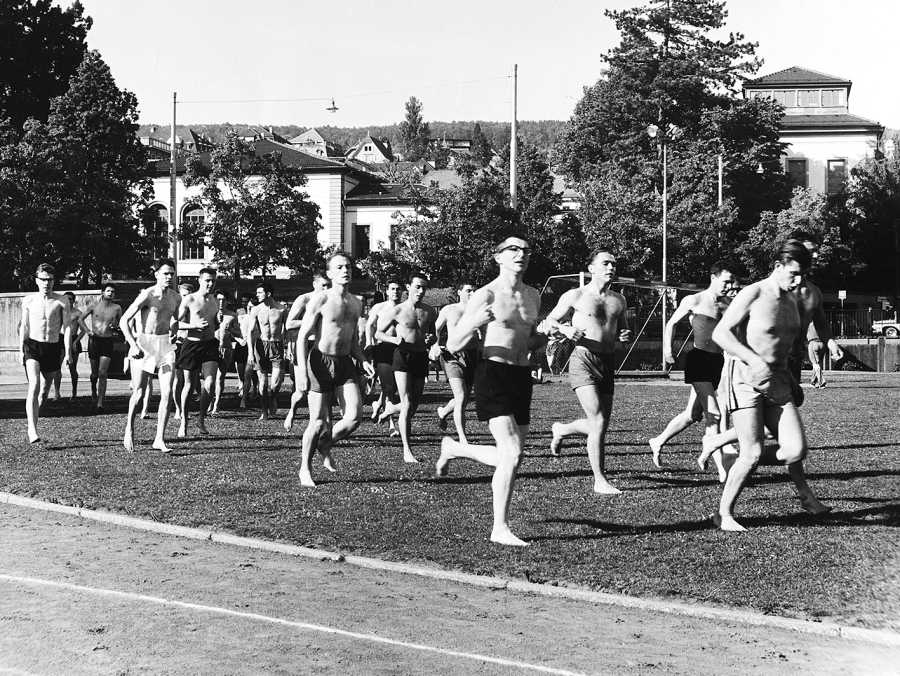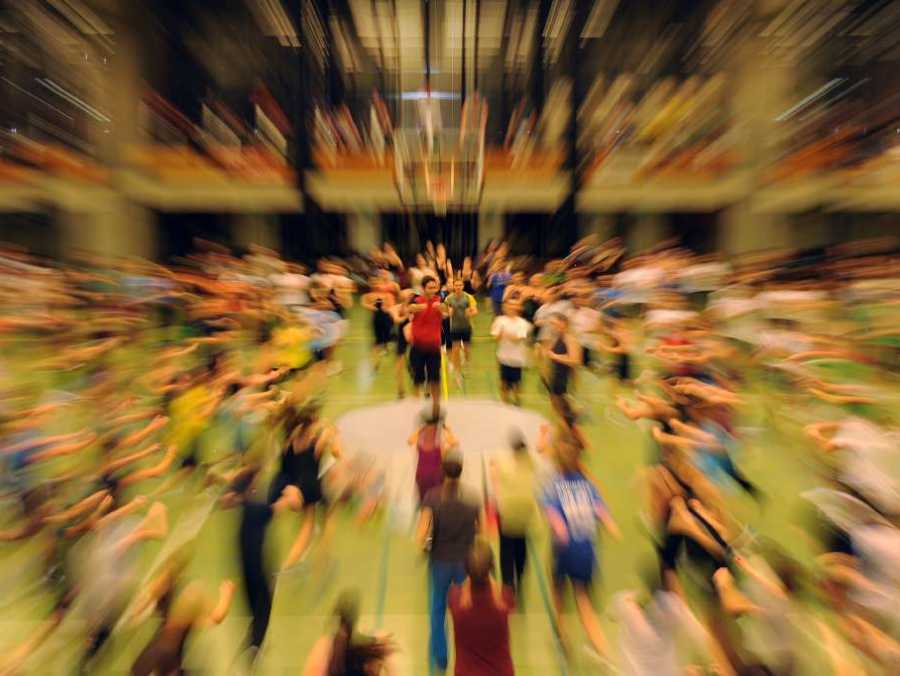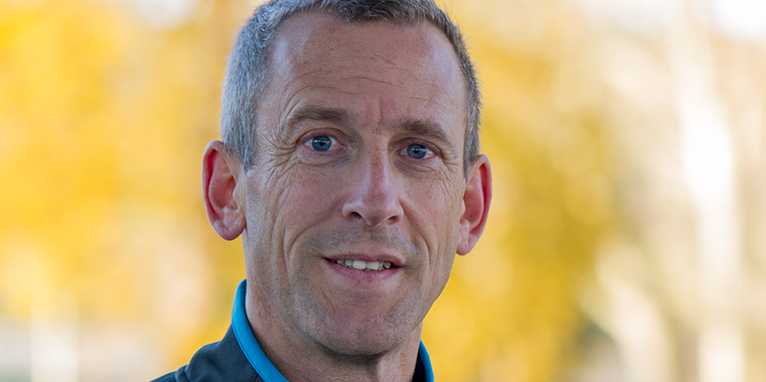University duel to mark anniversary
The Academic Sports Association Zurich (ASVZ) is celebrating its 75th anniversary and is staging a university duel to mark the occasion. In an interview with ETH News ASVZ Director Lorenz Ursprung talks about how the association has grown, what its main focus is today and who will emerge victorious from the duel.
The Academic Sports Association Zurich (ASVZ) is celebrating its 75th anniversary. It was founded in 1939. Is it just a coincidence that it was established the same year that World War II broke out?
In my opinion it is a coincidence. The history of university sport began much earlier. The first academic gymnastics clubs were set up in the early 19th century. One milestone was the foundation in 1919 of the Academic Sports Commission, an initiative of students at ETH and the University of Zurich. Their main problem was that they didn’t have their own sports complex. One of the locations where they trained was on the Wässerwiese on Rämistrasse. In 1939 the Sports Commission and the Sports Grounds Commission joined forces and established ASVZ with a view to securing their own sports complex. But it took 35 years for ASVZ to achieve this goal. It was not until 1974 that the Association inaugurated the Fluntern sports complex.
Today, ASVZ has numerous sports complexes, employs 1,000 training managers and welcomes 1.5 million visitors every year. Where will the Association be for its 100th anniversary?
It will continue to offer very good sport. Our development depends, of course, on how student numbers evolve. The number of ASVZ members grows in parallel to the number of students but it has increased above average over the last 20 years. From the past we know that we always saw a sharp increase in the number of participants when ASVZ was able to open new sports facilities.
How do you explain this above-average growth?
It has to do with the status of sport in society. It has risen in all groups in the population whereby students rank amongst the most active sports practitioners. But it looks like we manage again and again to provide a really attractive sports offering.
A few years ago ASVZ opened a new, large sports centre on the Hönggerberg. At the ETH Zentrum campus space is probably slowly becoming a bit tight.
It’s already extremely cramped now. It was a stroke of luck that ASVZ was able to open the Polyterrasse as a sports complex in 1977. Initially the plans had envisaged a giant auditorium. Last year we recorded 550,000 entries on the Polyterrasse alone. It is by far the most widely used ASVZ sports complex. We’re at our limits there although we already thought five years ago that we had reached our limits.
Is there any hope of more space on the Zentrum campus?
We have staked our hopes on the Hochschulmeile project (ETH Life reported). I’m hoping amongst things for more multifunctional rooms which ASVZ could use as fitness rooms, dance spaces, group fitness, body and mind or for martial arts.
For a few years now students and staff from the Zurich universities of applied sciences have been using the ASVZ facilities, too. Hasn’t this further exacerbated the capacity problem?
With the Zurich universities of applied sciences, ZFH (ed: the ZFH is composed of three public institutes of higher education) we have secured a third strong partner which participates financially on a par with the University and ETH. Whereas the University and ETH both have two large university sports complexes, ZFH only has one at the Zurich Pedagogical University (PHZH) which can however only be used at certain times. Winterthur, where the vast majority of the students at the Zurich University of Applied Sciences (ZHAW, Hochschule der Angewandten Wissenschaften) are based, still doesn’t have a university sports complex. A construction project is ongoing. In the autumn of 2015 we want to take up occupancy of an industrial hall in which we will be able to offer a large number of sports activities under one roof. With the building of a new campus on the Winterthurer Sulzerareal another sports complex will be available in a few years’ time.
Who are the ASVZ sports practitioners?
The majority are students at the three universities. Almost 60,000 obtain automatic membership of ASVZ when they pay their semester fees. Almost two-thirds say that they make use of the sports offering, more than 20,000 regularly train with us. Furthermore, over 10,000 additional people are members of ASVZ, mainly university employees and alumni. Because this membership is voluntary I assume that most of them regularly use the ASVZ facilities. One interesting development is that we recorded growth of 33 percent last year amongst ETH employees without us doing any advertising. Of all participant categories that is by far the highest growth rate.
You became the Director of ASVZ in 2012. Do these figures likewise confirm to you that you are on the right track?
I don’t think that in the short time I have been Director I have been able to exert any major influence. The Association is only in such a good position today because many individuals and organisations have been committed to it. When I took over as Director the ASVZ was not in a desperate position. Just like in many other organisations there were areas which had been highly developed and others which had been slightly neglected as a consequence of the focus of the staff who had been with the Association for many years. It was my job to reduce the deficits in the neglected areas. However, this scarcely changed the overall product ASVZ. Our remit is and continues to be to offer all entitled participants a good and diverse sports offering.
ASVZ celebrates its anniversary with a university duel that kicks off in the first week of May. What’s this about?
The idea comes from the “Commune duel”: Two communes engage in friendly competition with each other and during one week they measure how often their inhabitants engaged in sport. The commune with the highest number of sports participants wins. Over the period of one week we look at which of the two Zurich universities is more active in terms of sport. All employees may also participate during this period in ASVZ and generate points for their university.
Your tip: Who will win the duel?
The most recent university sports survey revealed that the University and ETH students engage in almost the same volume of sport. Overall, the University has around 1.2 times more members which is reflected in a corresponding conversion factor with which the training hours of ETH members is multiplied. Five ETH students are therefore equivalent to six University students. The wager of the universities is that the loser has to pay ASVT for the installation of the new power training gym on the Fluntern university campus. I hope that many university members will engage in sport for their university. It will be a close contest and will be a nail-biter right up to the last day.
49-year-old Lorenz Ursprung has been the Director of the Academic Sports Association Zurich (ASVZ) since July 2012. At ETH Zurich he graduated as a gymnastics and sports teacher in 1989. After that he did a degree in German studies and philosophy at the University of Zurich. Prior to taking up office as ASVZ Director, he spent almost ten years with the Federal Office for Sport (Baspo) in Magglingen, six of them in the executive management.
75 years jubilee ASVZ
-

Women’s power at the university championships in 1937 in the Zürcher Letzigrund, two years before the foundation of ASVZ. (Image: courtesy of ASVZ) -

Those were the days (no sports complex of our own): fitness training outdoors in the 1940s on Rämistrasse 80. (Image: courtesy of ASVZ) -

One of the top five workouts of ASVZ is the legendary "Kondi" at Polyterrasse. (Photo: courtesy ASVZ)
